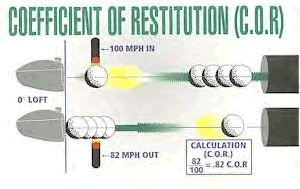|
|
How Spring Face Drivers Work
by Staff 9
 The latest in golf this year are the new "spring" faced drivers. There are two types of spring face driver designs: variable face thickness (VFT) and constant face thickness (CFT). The latest in golf this year are the new "spring" faced drivers. There are two types of spring face driver designs: variable face thickness (VFT) and constant face thickness (CFT).
A traditional titanium driver is made from very strong titanium with a face thickness of approximately 3.2 mm. A CFT driver has a face thickness of approximately 2.6 mm over the entire hitting surface of the golf club while a VFT driver has the normal face thickness of 3.2 mm in the center of the club face and a 2.6 mm face thickness around the perimeter of the club face.
Both the VFT and CFT spring faced drivers are manufactured from titanium with more elastic properties than traditional titanium allowing the metal to actually flex slightly without breaking. There is no evidence that either spring face driver design style performs better than the other when struck solidly in the center of the club face.
Here is how it works: When a spring face driver strikes a golf ball, the face of the driver gives or flexes slightly softening the collision between the golf ball and the club face. Due to this softened collision more of the golf ball's energy is stored which results in the golf ball rebounding off of the club face with higher than normal velocity. The final result of all this flexing and energy storing is simply more distance for the golfer.
The U.S.G.A. has a test for spring face drivers that measures the outbound velocity of a golf ball after it is shot from an air cannon into the face of the driver. If the outbound velocity of the golf ball exceeds 83% of the inbound velocity then the golf club is deemed to be non-conforming to U.S.G.A. rules.
back |
|